Acoustic systems anatomy: kontraperturnye speakers - the advantages of exotic against serial rationalism
Our blog has not yet raised the topic of an arch-rare, exotic type of speaker system - known as a counter-aperture. Speaking frankly, I vaguely imagined what it is, why it is needed and what it is “eaten” with. So I had to google pretty much. Among the sources were a couple of forums, two scientific articles and one patent. Meanwhile, I have a desire to cover all existing types of speakers in this cycle, and therefore I decided not to sidestep this undoubtedly interesting topic.

In Wikipedia and other sources, konperperture speakers are presented as an example of economically and serially unreasonable decisions for the notorious High End. Adherents of kontraperturnyh speakers consider them unfairly forgotten evolutionary branch of sound-reproducing devices, allowing to receive omnidirectional radiation and a lot of other remarkable effects impossible using other architecture. Under the cut in detail about kontraperturnoy acoustics.
The term “contraception” itself is more often used in optics, where it denotes coaxially arranged light-emitting holes. In acoustics, the meaning changes a little, and instead of holes one should understand loudspeakers.
Acoustic design in such speakers assumes the placement of two identical speakers (and here the values that can be neglected become very small) strictly opposite each other and their common-mode switching. It is important that the emitters do not have phase delays and frequency differences (this significantly increases the cost of the component). When these conditions are met, the waves from the oppositely directed dynamic heads of the antispection speaker emit a resultant wave with a spherical front (that is, in fact, they represent an omnidirectional radiator).
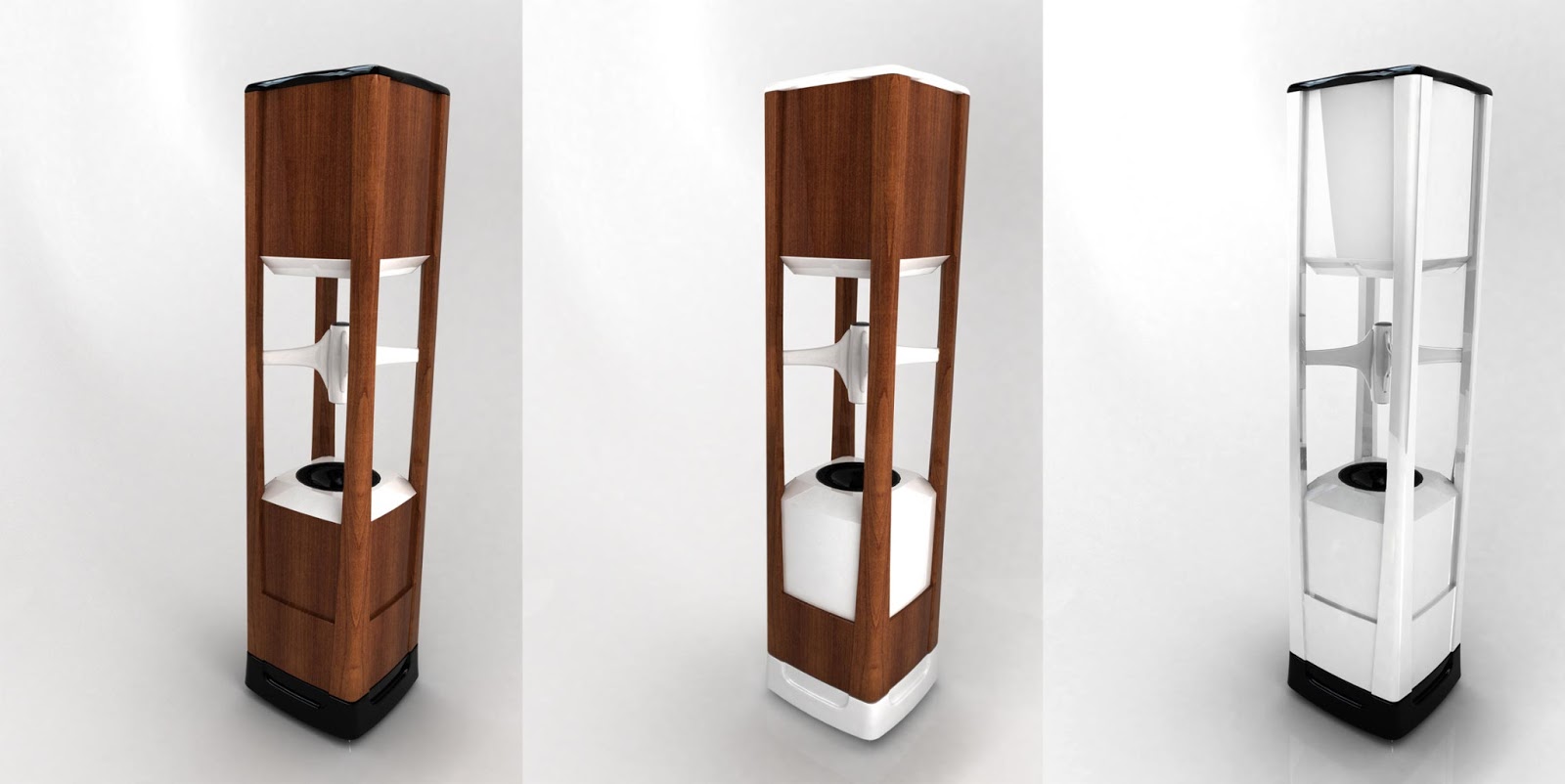
These principles of contraperture radiation were described in the work of L.V. Golovkina “Creation speakers in all sides direction in acoustics”. It was noted there that it is possible to determine the optimal distance between coaxially arranged speakers for the appearance of the effect of omnidirectional radiation.
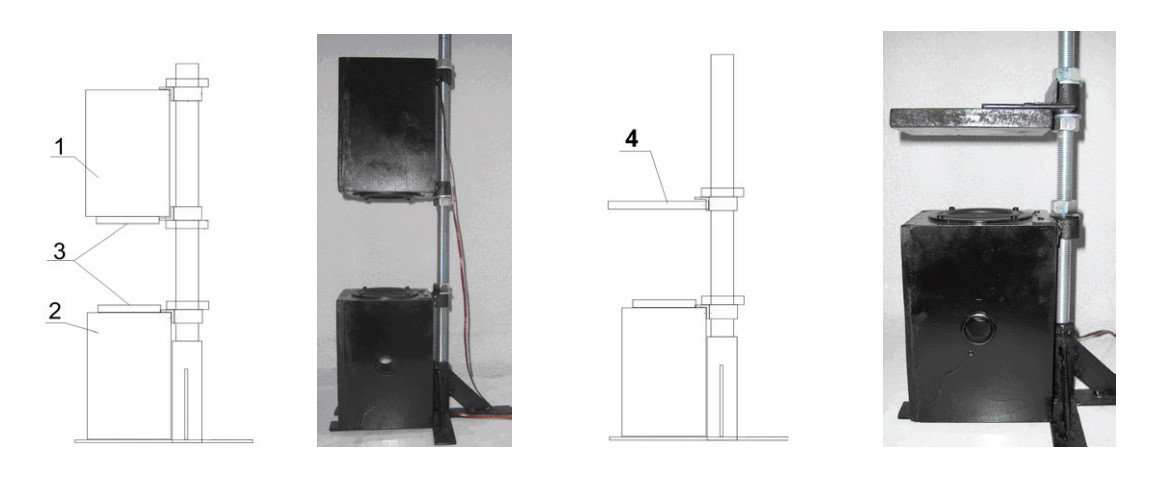
Contraperture and semi-aperture speakers
Also known so-called. semi-aperture speakers, where instead of the second radiator a special plate is used. The principle remains close, with the only difference that the effect is achieved using reflected waves.
Experts point out minor differences in the resulting waves when using konperperturny and semi-aperture radiation.
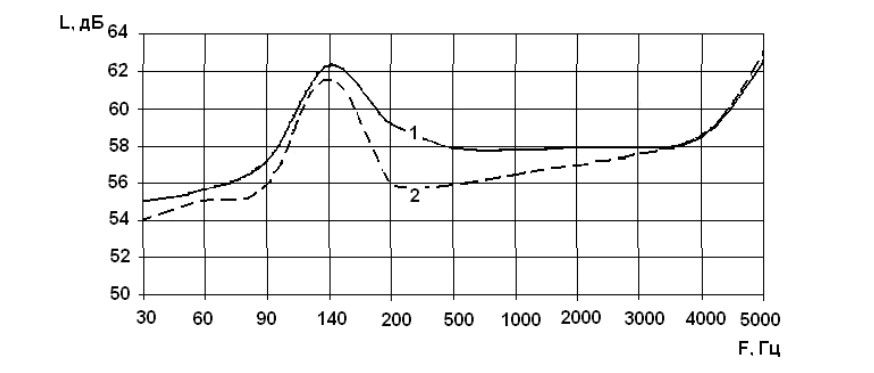
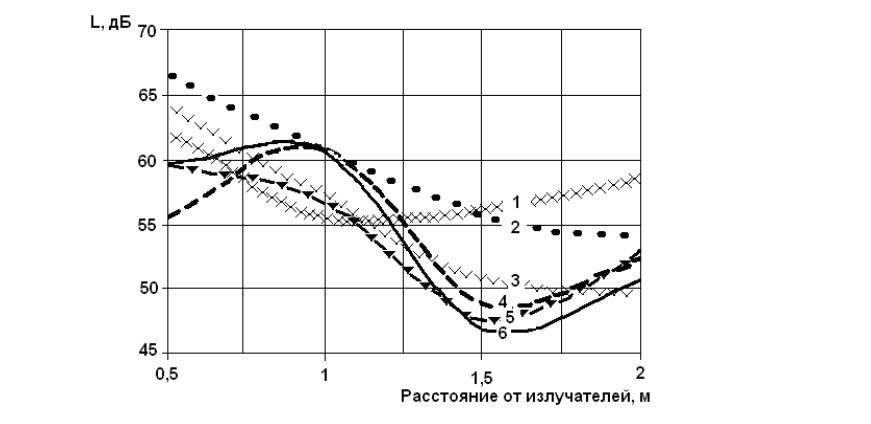
The similarity was confirmed in the work of Golovkina L.V., Umyarova R.Ya. “Research of kontraperturny emitters in acoustics”, which were conducted at the Kharkov National University of Radio Electronics.
In contrast to many irrational, meaningless, commercially speculative decisions in the High End, the use of counter-perturbation radiation has both a physical and psychoacoustic rationale. Describes the effects on fidelity playback.
Directional pattern
At the interaction of waves of coaxially arranged speakers, sound pressure is created in the air “column” between them. There is a so-called. “Pressure monopole” or omnidirectional point. This expands the vertical and horizontal radiation patterns.

It is logical that when using omnidirectional radiation, the zone of comfortable listening increases. Accordingly, there is no need to search for the “apex of the triangle” to create the correct stereo panorama and correct location of the CID (apparent sound sources). The problem of the “far zone” is solved in the same way, in which the listening becomes more comfortable.
The forums have been to meet the arguments of the series:
I want to note that the reflections will undoubtedly be, as with the use of speakers with classical architecture. Accordingly, it will be impossible to do without acoustic treatment of the room. At the same time, the classical speakers have no less reflections, they are just uneven and just as well require appropriate solutions in the decoration of walls, etc.
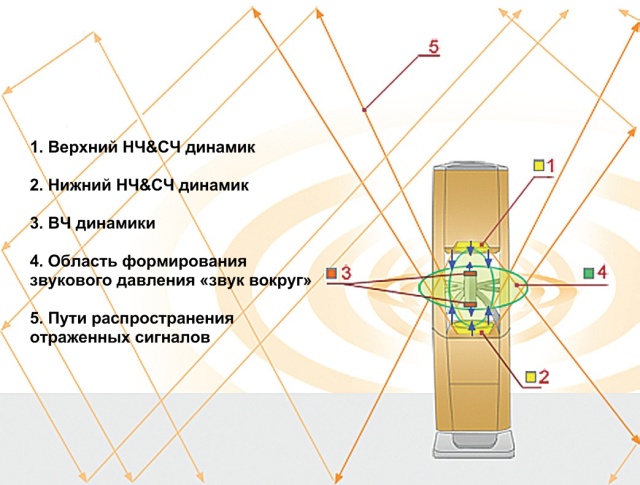
Practically everyone who is allowed to write about konperperturnoy acoustics, mention the Doppler intermodulation. On the website “Fundamentals of Acoustics” this term is given the following definition: “Phase and frequency shifts or vibrations of a sound wave due to the movement of a sound source”.
If simplistic, the cause of these distortions is the change in distance from the membrane of the loudspeaker to the listener. Any driver with the electromechanical principle of radiation (speaker, iso (ortho) speaker, electrostat, etc.) is not immune from this disadvantage in the classical system architecture.
It is believed that the high sensitivity of hearing to the Doppler intermodulation is due to neuropsychologically. It is based on a mechanism for determining the distance to certain objects using hearing. This ability of hearing developed evolutionarily as an indicator of probable danger (of a moving object). For this reason, even minor changes in the distance from the speaker membrane to the ear can be perceived by ear, creating the effect of a natural flanger (approaching / departing train).
In the case of kontraperturny emitters, the radiation source (“monopole pressure”) is static, and does not move, respectively, and the flanger effect of Doppler intermodulation does not occur.
The hypothesis of psychoacoustic comfort
A number of authors note the “high naturalness” and “subjective psychological comfort” of music reproduced through counter-acoustic acoustics. It is argued that the reason for these effects is the absence of the distance change described above.
In other words, an object constantly moving back and forth is perceived by the brain as more dangerous (at the level of basic reflex reactions), and a fixed one as less dangerous. Such judgments remain hypothetical and have not yet found experimental confirmation, but are popular both among music lovers and among psychoacoustics researchers.
So, the advantages:
The specific disadvantages of the antiseptics speakers are considered:
And as a result of all of the above - the astronomical price.
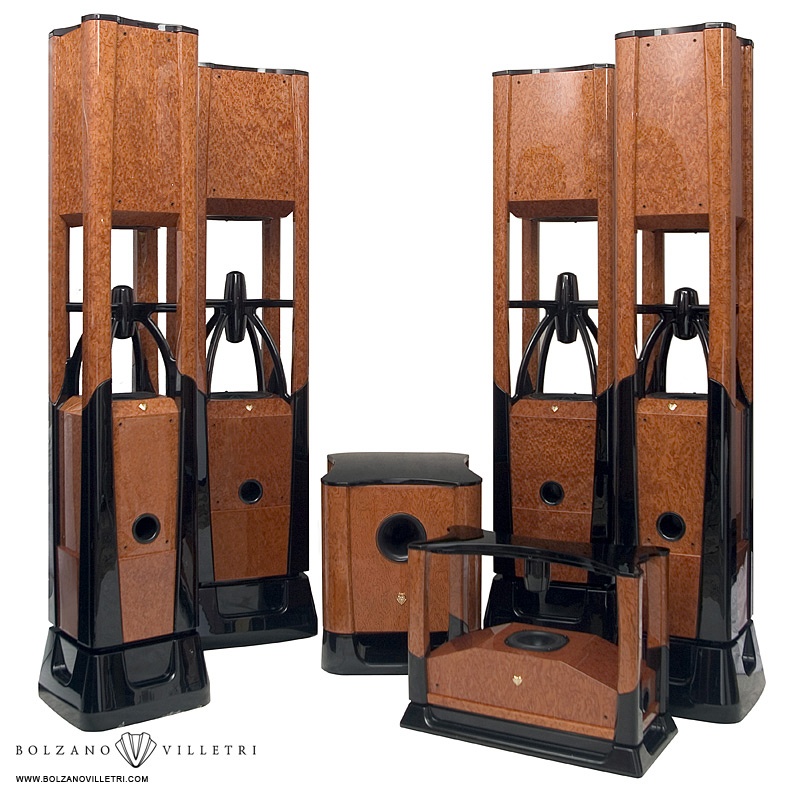
These flaws made the capping acoustics, perhaps the most unpopular speaker type for a mass producer. In addition, as with any other speaker system, such common problems as contour resonances, frequency response curve, THD, IMD, problem filters that “twist the phase”, etc.
The most noticeable and most valuable effect of contrastive speakers is the expansion of the “comfort zone” when listening, due to a circular pattern. Doppler intermodulation and hypothetical psychoacoustic comfort are very beautiful, but little convincing arguments in favor of such speakers.
It seems to me - this is one of the least noticeable problems that may exist in acoustic systems. In my experience, the flanger effect becomes truly significant at distances from a few meters (approaching train), which is hardly comparable to vibrations of a dynamic loudspeaker membrane. A hypothetical danger of moving objects, I believe, is a controversial theoretical argument.
In fairness, I want to note that quite a few people do not share my point of view and claim that the Doppler intermodulation seriously spoils the sound. Blind tests, due to the rarity of such acoustics, and did not have to observe and observe. If readers have information about the visibility of these effects and the “unique comfort” when listening to the kontraperturnyh columns - I would be grateful for the comments.
With all the initial attractiveness of the idea, everything spoils the final cost of the product, which also increases due to the fact that the product itself is an exotic rarity. In today's audio market, I know 2 serial manufacturers.
Jeans
In our catalog is presentedA wide range of high fidelity speaker systems .
References Photo
content used:
onliner.by
baseacoustica.ru
www.bolzano-villetri.com
RadioRadar.net
www.sworld.com.ua

In Wikipedia and other sources, konperperture speakers are presented as an example of economically and serially unreasonable decisions for the notorious High End. Adherents of kontraperturnyh speakers consider them unfairly forgotten evolutionary branch of sound-reproducing devices, allowing to receive omnidirectional radiation and a lot of other remarkable effects impossible using other architecture. Under the cut in detail about kontraperturnoy acoustics.
How does it work?
The term “contraception” itself is more often used in optics, where it denotes coaxially arranged light-emitting holes. In acoustics, the meaning changes a little, and instead of holes one should understand loudspeakers.
Acoustic design in such speakers assumes the placement of two identical speakers (and here the values that can be neglected become very small) strictly opposite each other and their common-mode switching. It is important that the emitters do not have phase delays and frequency differences (this significantly increases the cost of the component). When these conditions are met, the waves from the oppositely directed dynamic heads of the antispection speaker emit a resultant wave with a spherical front (that is, in fact, they represent an omnidirectional radiator).

These principles of contraperture radiation were described in the work of L.V. Golovkina “Creation speakers in all sides direction in acoustics”. It was noted there that it is possible to determine the optimal distance between coaxially arranged speakers for the appearance of the effect of omnidirectional radiation.
“This distance is determined by the angle of the head pattern and the total sound pressure generated at some distance from the head when summing up a certain power.“ (Golovkin)

Contraperture and semi-aperture speakers
1, 2 - cases for broadband heads (3), a reflecting plate - 4.
Also known so-called. semi-aperture speakers, where instead of the second radiator a special plate is used. The principle remains close, with the only difference that the effect is achieved using reflected waves.
Experts point out minor differences in the resulting waves when using konperperturny and semi-aperture radiation.

The measurement results of the frequency response of the full kontraperturny radiator
(solid line - 1) and semi-aperture (dashed line - 2)

Dependence of the averaged sound pressure level of the emitters on the distance
1 - two counter-aperture emitters; 2 - two conventional systems (stereo pair); 3 -
one conventional speaker system; 4 - one semi-aperture radiator; 5 -
two semi-aperture emitters; 6 - one kontraperturny emitter.
The similarity was confirmed in the work of Golovkina L.V., Umyarova R.Ya. “Research of kontraperturny emitters in acoustics”, which were conducted at the Kharkov National University of Radio Electronics.
Why and how to use it?
In contrast to many irrational, meaningless, commercially speculative decisions in the High End, the use of counter-perturbation radiation has both a physical and psychoacoustic rationale. Describes the effects on fidelity playback.
Directional pattern
At the interaction of waves of coaxially arranged speakers, sound pressure is created in the air “column” between them. There is a so-called. “Pressure monopole” or omnidirectional point. This expands the vertical and horizontal radiation patterns.

It is logical that when using omnidirectional radiation, the zone of comfortable listening increases. Accordingly, there is no need to search for the “apex of the triangle” to create the correct stereo panorama and correct location of the CID (apparent sound sources). The problem of the “far zone” is solved in the same way, in which the listening becomes more comfortable.
The forums have been to meet the arguments of the series:
“Thus, the number of reflections will increase, the sound will become porridge and the radiation pattern will not be needed!”
I want to note that the reflections will undoubtedly be, as with the use of speakers with classical architecture. Accordingly, it will be impossible to do without acoustic treatment of the room. At the same time, the classical speakers have no less reflections, they are just uneven and just as well require appropriate solutions in the decoration of walls, etc.

A little bit about Doppler intermodulation
Practically everyone who is allowed to write about konperperturnoy acoustics, mention the Doppler intermodulation. On the website “Fundamentals of Acoustics” this term is given the following definition: “Phase and frequency shifts or vibrations of a sound wave due to the movement of a sound source”.
If simplistic, the cause of these distortions is the change in distance from the membrane of the loudspeaker to the listener. Any driver with the electromechanical principle of radiation (speaker, iso (ortho) speaker, electrostat, etc.) is not immune from this disadvantage in the classical system architecture.
It is believed that the high sensitivity of hearing to the Doppler intermodulation is due to neuropsychologically. It is based on a mechanism for determining the distance to certain objects using hearing. This ability of hearing developed evolutionarily as an indicator of probable danger (of a moving object). For this reason, even minor changes in the distance from the speaker membrane to the ear can be perceived by ear, creating the effect of a natural flanger (approaching / departing train).
In the case of kontraperturny emitters, the radiation source (“monopole pressure”) is static, and does not move, respectively, and the flanger effect of Doppler intermodulation does not occur.
The hypothesis of psychoacoustic comfort
A number of authors note the “high naturalness” and “subjective psychological comfort” of music reproduced through counter-acoustic acoustics. It is argued that the reason for these effects is the absence of the distance change described above.
In other words, an object constantly moving back and forth is perceived by the brain as more dangerous (at the level of basic reflex reactions), and a fixed one as less dangerous. Such judgments remain hypothetical and have not yet found experimental confirmation, but are popular both among music lovers and among psychoacoustics researchers.
Dry residue: advantages and disadvantages
So, the advantages:
- Omni-directionality of radiation.
- Circular horizontal and wide vertical radiation patterns.
- Lack of Doppler intermodulation.
- Hypothetical reflex comfort (not confirmed).
The specific disadvantages of the antiseptics speakers are considered:
- Difficulties with accurate coaxial placement of the speakers.
- The lack of experimental data on the basic characteristics of multi-band counteroptic speakers.
- The complexity of the design of the AU, especially in the case of using a multiband circuit and, accordingly, a decrease in processability.
- Selection of pairs of loudspeakers with strictly identical frequency characteristics.
- Reducing the permissible technological error when installing emitters and reflectors.
- Cost increase (the need to use additional loudspeakers and reflectors).
And as a result of all of the above - the astronomical price.

These flaws made the capping acoustics, perhaps the most unpopular speaker type for a mass producer. In addition, as with any other speaker system, such common problems as contour resonances, frequency response curve, THD, IMD, problem filters that “twist the phase”, etc.
Total
The most noticeable and most valuable effect of contrastive speakers is the expansion of the “comfort zone” when listening, due to a circular pattern. Doppler intermodulation and hypothetical psychoacoustic comfort are very beautiful, but little convincing arguments in favor of such speakers.
It seems to me - this is one of the least noticeable problems that may exist in acoustic systems. In my experience, the flanger effect becomes truly significant at distances from a few meters (approaching train), which is hardly comparable to vibrations of a dynamic loudspeaker membrane. A hypothetical danger of moving objects, I believe, is a controversial theoretical argument.
In fairness, I want to note that quite a few people do not share my point of view and claim that the Doppler intermodulation seriously spoils the sound. Blind tests, due to the rarity of such acoustics, and did not have to observe and observe. If readers have information about the visibility of these effects and the “unique comfort” when listening to the kontraperturnyh columns - I would be grateful for the comments.
With all the initial attractiveness of the idea, everything spoils the final cost of the product, which also increases due to the fact that the product itself is an exotic rarity. In today's audio market, I know 2 serial manufacturers.
Jeans
In our catalog is presentedA wide range of high fidelity speaker systems .
References Photo
content used:
onliner.by
baseacoustica.ru
www.bolzano-villetri.com
RadioRadar.net
www.sworld.com.ua
